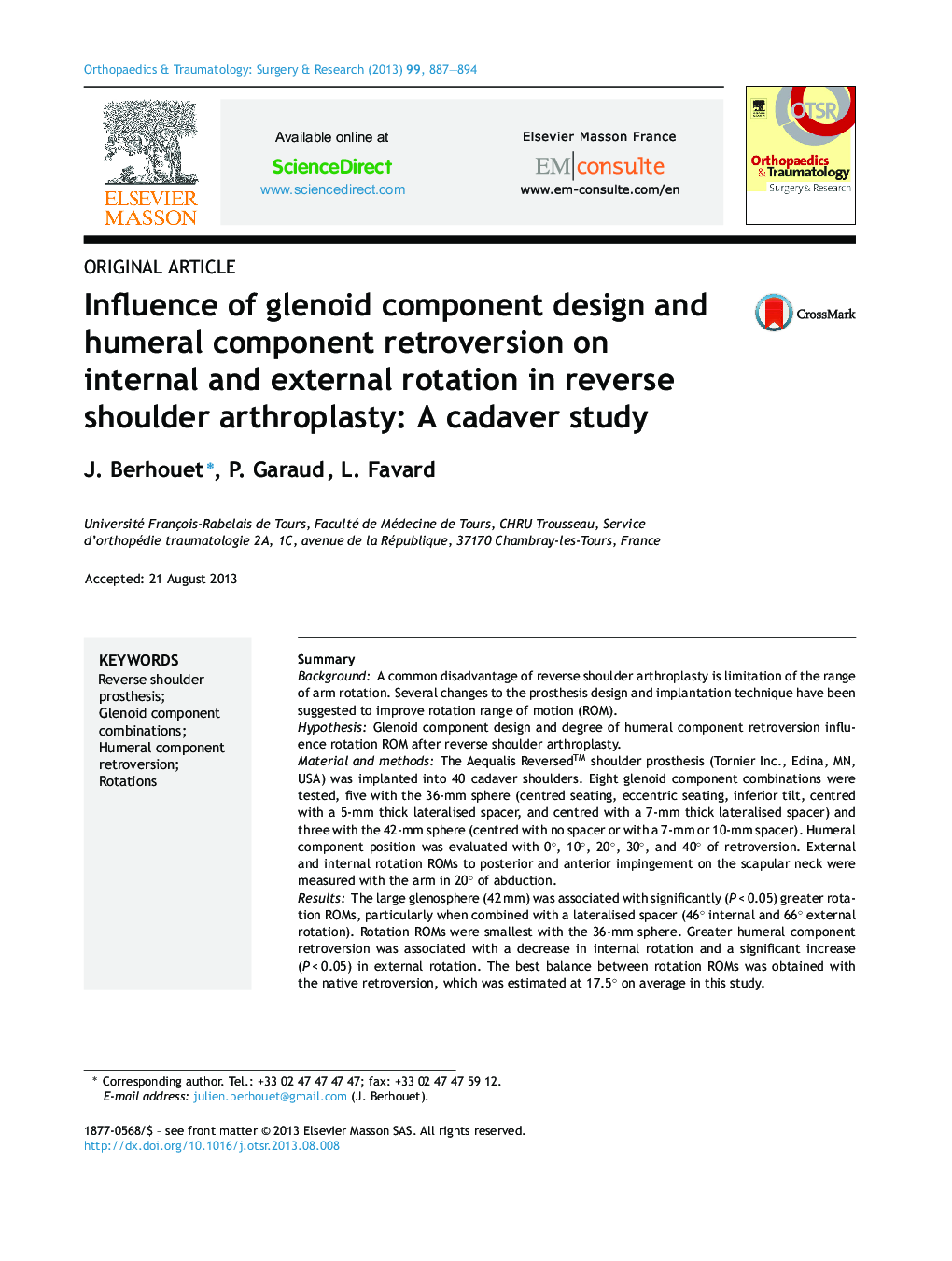| کد مقاله | کد نشریه | سال انتشار | مقاله انگلیسی | نسخه تمام متن |
|---|---|---|---|---|
| 4081563 | 1267598 | 2013 | 8 صفحه PDF | دانلود رایگان |

SummaryBackgroundA common disadvantage of reverse shoulder arthroplasty is limitation of the range of arm rotation. Several changes to the prosthesis design and implantation technique have been suggested to improve rotation range of motion (ROM).HypothesisGlenoid component design and degree of humeral component retroversion influence rotation ROM after reverse shoulder arthroplasty.Material and methodsThe Aequalis Reversed™ shoulder prosthesis (Tornier Inc., Edina, MN, USA) was implanted into 40 cadaver shoulders. Eight glenoid component combinations were tested, five with the 36-mm sphere (centred seating, eccentric seating, inferior tilt, centred with a 5-mm thick lateralised spacer, and centred with a 7-mm thick lateralised spacer) and three with the 42-mm sphere (centred with no spacer or with a 7-mm or 10-mm spacer). Humeral component position was evaluated with 0°, 10°, 20°, 30°, and 40° of retroversion. External and internal rotation ROMs to posterior and anterior impingement on the scapular neck were measured with the arm in 20° of abduction.ResultsThe large glenosphere (42 mm) was associated with significantly (P < 0.05) greater rotation ROMs, particularly when combined with a lateralised spacer (46° internal and 66° external rotation). Rotation ROMs were smallest with the 36-mm sphere. Greater humeral component retroversion was associated with a decrease in internal rotation and a significant increase (P < 0.05) in external rotation. The best balance between rotation ROMs was obtained with the native retroversion, which was estimated at 17.5° on average in this study.DiscussionOur anatomic study in a large number of cadavers involved a detailed and reproducible experimental protocol. However, we did not evaluate the variability in scapular anatomy. Earlier studies of the influence of technical parameters did not take humeral component retroversion into account. In addition, no previous studies assessed rotation ROMs.ConclusionRotation ROM should be improved by the use of a large-diameter glenosphere with a spacer to lateralise the centre of rotation of the gleno-humeral joint, as well as by positioning the humeral component at the patient's native retroversion value.Level of evidenceBasic Science Study III.
Journal: Orthopaedics & Traumatology: Surgery & Research - Volume 99, Issue 8, December 2013, Pages 887–894